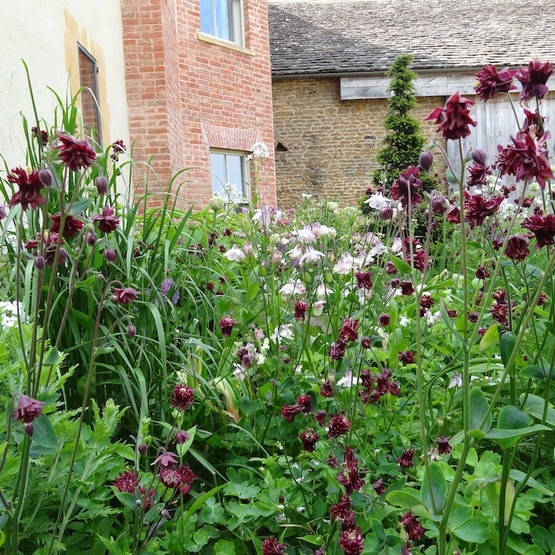
Oh yes, the spring is racing ever onward. Faster and faster as we tip over the hill and freewheel our way in to early summer. How do I know this? Because the Aquilegias are just about to start flowering.
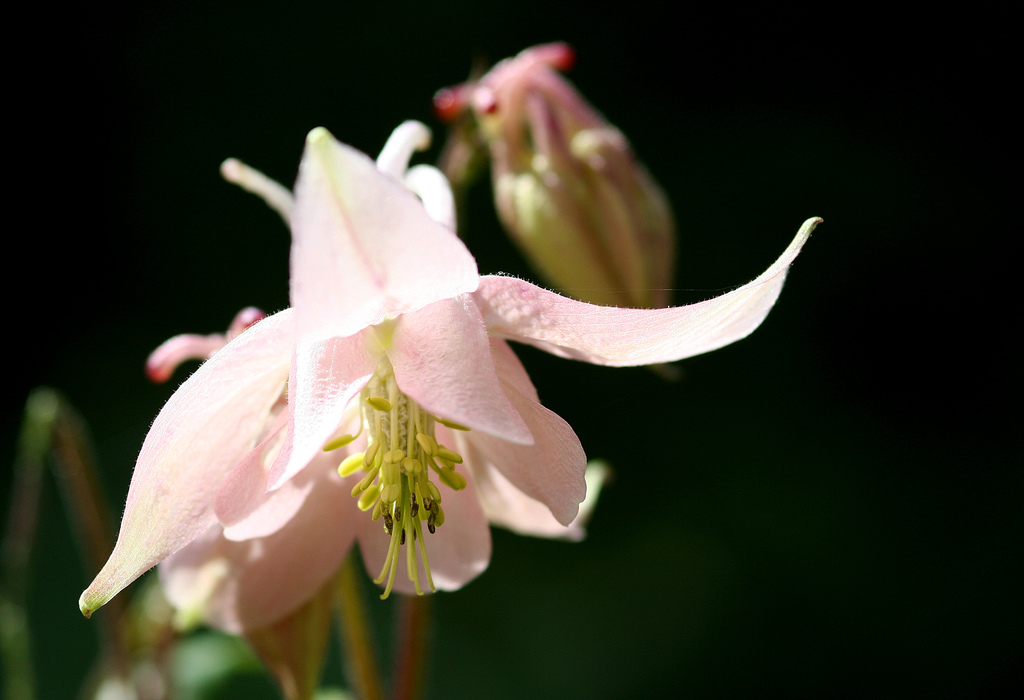 In 1929 there was a debate in the pages of Time magazine about the American National Flower. Rather like a beauty pageant it boiled down to a contest between the wild rose and the Aquilegia: tension mounted, voices were occasionally raised but, eventually, the Rose won and the poor old runner-up had to be content with representing Colorado (which is still a good thing). Notwithstanding this minor social setback the Aquilegia (also known as the Columbine, Granny’s Bonnet, Jack-in-Trousers and many other names) is a delight: instantly recognisable, multi coloured, ferny of leaf and shamelessly fertile.
In 1929 there was a debate in the pages of Time magazine about the American National Flower. Rather like a beauty pageant it boiled down to a contest between the wild rose and the Aquilegia: tension mounted, voices were occasionally raised but, eventually, the Rose won and the poor old runner-up had to be content with representing Colorado (which is still a good thing). Notwithstanding this minor social setback the Aquilegia (also known as the Columbine, Granny’s Bonnet, Jack-in-Trousers and many other names) is a delight: instantly recognisable, multi coloured, ferny of leaf and shamelessly fertile.
Aquilegia canadensis is the original north American columbine: a woodland plant with small and delicate red petalled flowers with a tassel of pollen dusted, yellow anthers dangling beneath and long spurs like kite tails that stream out from the back of the flower. (The name Aquilegia comes from the Latin for eagle as the spurs also look like the talons of an eagle.) These spurs contain nectar filled bulbs in just the right place for long tongued pollinators like hummingbirds.
Over here we are a bit short on hummingbirds so the European aquilegia, A.vulgaris, is a slightly different animal. It hybridises with gay abandon so nowadays we are spoilt for choice. In my garden, for example, we planted an unnamed deep purply-red variety whose seed I filched from a client’s garden. We now have soft blues, pinks and brick reds that have miraculously appeared and which, in many cases, are considerably lovelier than their parents. To add even more genes to the mix we have also planted William Guinness – a dreamy bruised purple flower with a perfectly contrasting white centre and the remarkable Green Apples (whose white flowers have a fresh brushed minty green tinge to them).
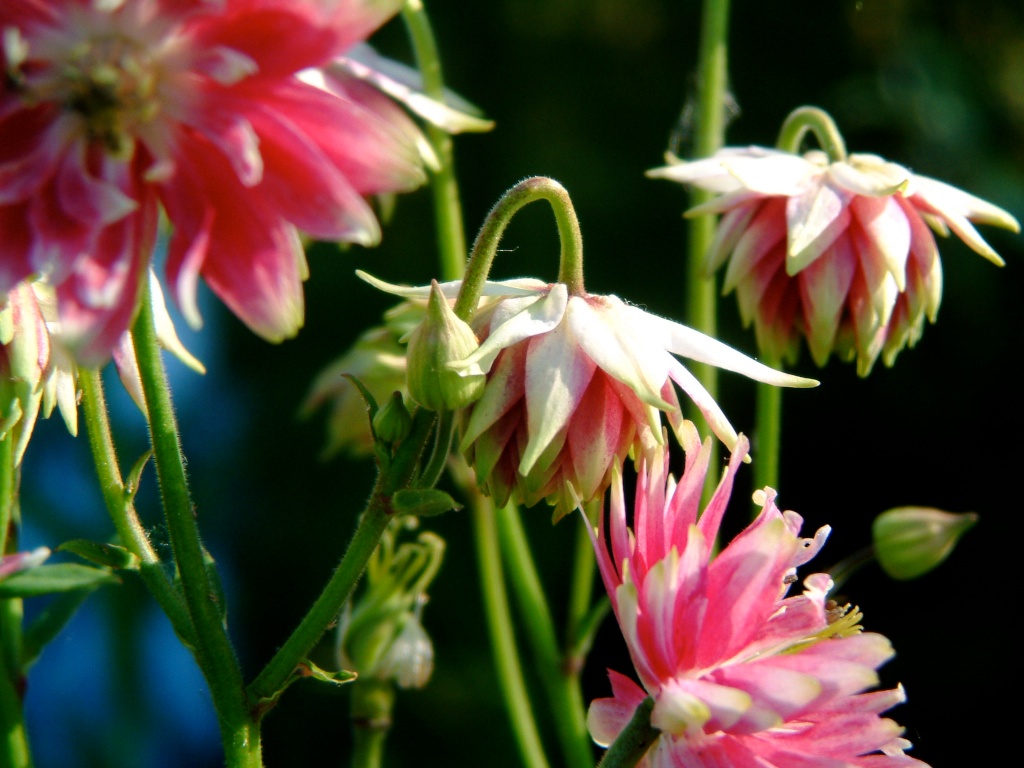
The magic does not stop there: as well as producing different coloured progeny there are also different shaped flowers. For example the very popular Norah Barlow (named after Charles Darwin’s granddaughter) has layers of plum red petals tipped with white like the ruffles on a Flamenco dancer’s skirt. She, along with many other doubles, have so many petals that they have virtually lost their spurs.
In contrast the characteristic spurs of some varieties have become so long that they can look a little like the plant equivalent of oversized clown shoes. The acknowledged prince of spurs is Aquilegia longissima which has a delicate custard yellow flower held high above bluish leaves and with sweepingly dapper spurs. It is a little tender but extraordinarily self assured and elegant – like a Queen’s champion strutting around before a joust.
This is a plant that is perfectly suited to both the formal and informal border as it is ridiculously easy to grow and charming in almost every combination. Most begin as a clump of bright silvery green leaves – shaped a bit like little oyster shells and delightful when dotted with dew or light rain – before sending up elegant stems in early summer. If cut back before seeding then a new clump of leaves quickly develops. Although the flowering period is short and quite early they are extraordinarily useful as they begin flowering as the tulips and other spring bulbs fade and before the heady might of summer descends in glory upon the garden.
At its simplest the propagation of this plant involves no more than watching, drink in hand, while the plant drops seeds. Next step up on the table of physical activity is to wander around the garden scattering seed in every direction. However, for the more organised gardener who does not appreciate the chaos theory school of gardening it is just as simple to plant seed in serried ranks ready for orderly transplanting. However, when you find a variety that you love: remember that the seed will not necessarily resemble the parent so to be absolutely sure of genetic purity either divide big clumps after flowering or take root cuttings.
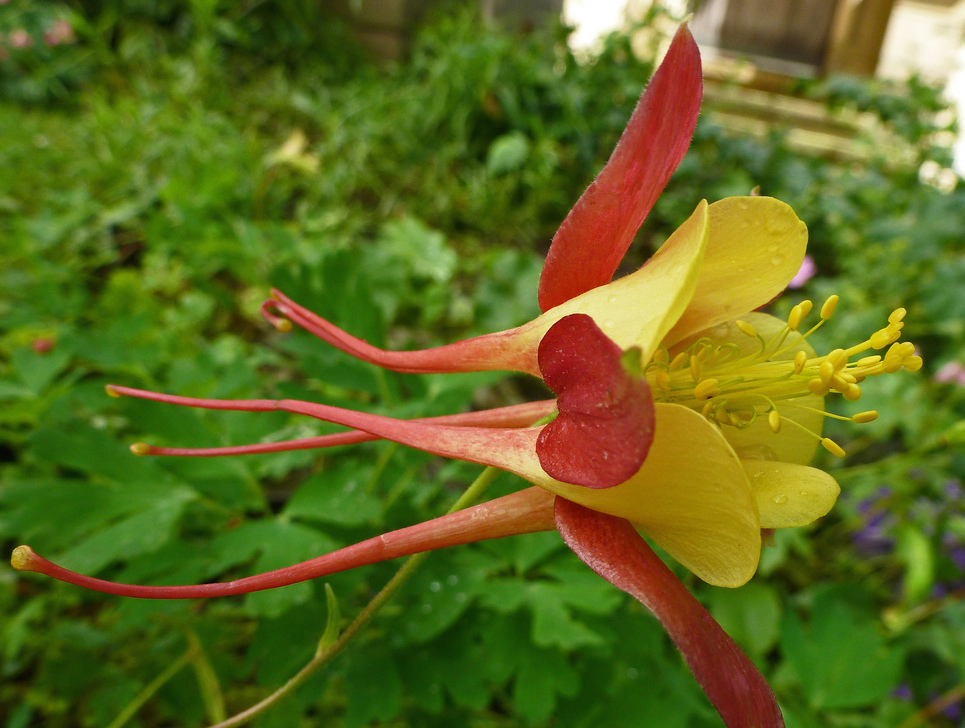
The Aquilegia is not a star plant: instead it is an indispensable member of the supporting cast. If your garden was the film Casablanca then the aquilegia would be Peter Lorre – Ingrid Bergman would, of course, be the rose.
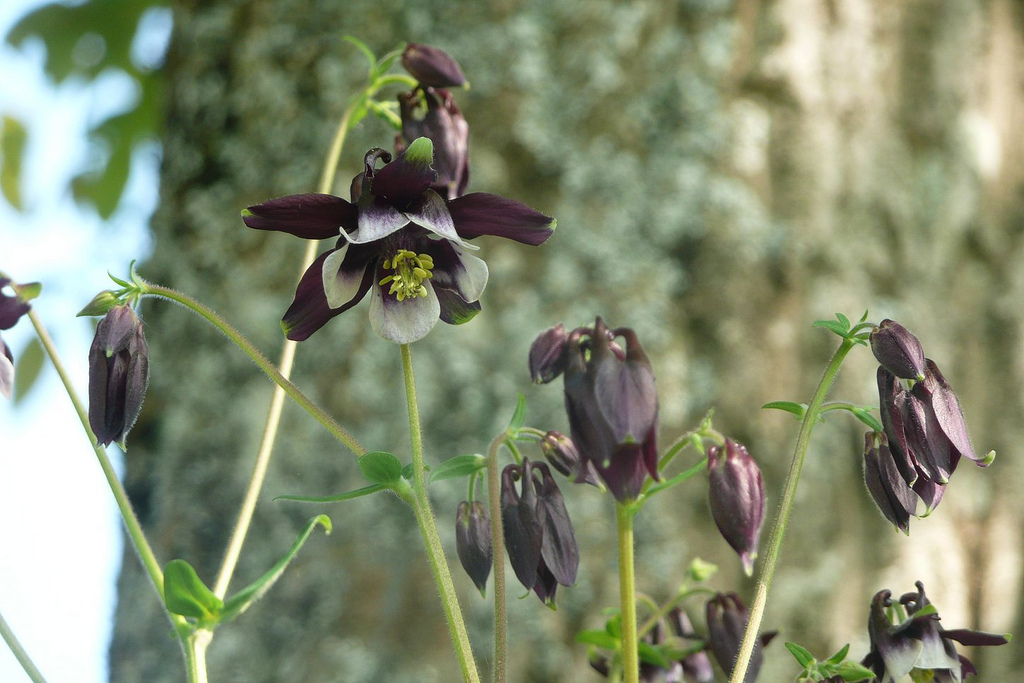


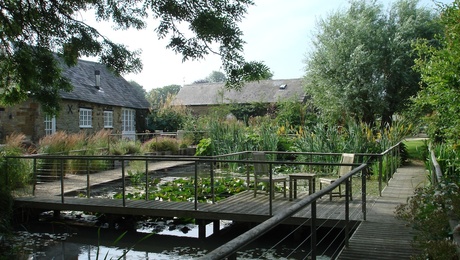














Comments
Thanks so much for the tidbit about Nora Barlow being Charles Darwin's granddaughter! I have this flower and the Phlox, 'Nora Leigh' because my daughter is named Nora. I also love how the columbines self seed with abandon. I have both the native and several cultivars. I enjoy your columns. Thanks for sharing!
-> If you want extra profit in the range of $50 to $300 every day for doing simple work over internet from your couch at home for 3-4 hours daily then read more here -> <-
Log in or create an account to post a comment.
Sign up Log in